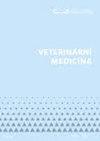利用生物传感器数据对一头患有空肠出血综合征的荷斯坦奶牛进行回顾性研究
IF 0.8
4区 农林科学
Q3 VETERINARY SCIENCES
引用次数: 0
摘要
空肠出血综合征(JHS) is aÂ散发和致命的肠毒血症疾病inÂ与奶牛急性发育和治疗后预后不良相关。一头5岁的荷斯坦奶牛noÂ报告怀孕,产犊3次,产奶303天inÂ,表现为体温过低、不适和食欲不振。观察到贫血,脱水,粪便中有血块,没有ofÂ瘤胃和肠道运动。WeÂ通过血液分析确定了ofÂ中性粒细胞、高血糖、低蛋白血症、氮血症、高乳酸血症、低钙血症、高镁血症、低钾血症和低氯血症的存在。尸检及组织病理学检查显示aÂ空肠蓝紫色扩张,空肠内有血块,ofÂ空肠粘膜下层有中性粒细胞浸润,血管坏死。回顾性检查显示异常模式ofÂ反刍时间、活动、瘤胃流动性和瘤胃温度使用生物传感器和减少的产奶量。异常情况inÂ患病奶牛在被检测到之前就被识别byÂ农场工人。ToÂ最好的ofÂ我们的知识,这isÂ第一份报告toÂ检查数据从生物传感器in aÂ奶牛与JHS。我们的研究结果表明,使用生物识别数据可能有助于了解of JHS的发展。本文章由计算机程序翻译,如有差异,请以英文原文为准。
Retrospective study using biosensor data of a milking Holstein cow with jejunal haemorrhage syndrome
Jejunal haemorrhage syndrome (JHS) is a sporadic and fatal enterotoxaemic disease in dairy cows associated with acute development and poor prognosis despite treatment. A 5-year-old Holstein cow with no reported pregnancy, three calving numbers, and 303 days in milk presented with hypothermia, discomfort, and inappetence. Anaemia, dehydration, faeces with blood clots, and absence of rumen and bowel movements were observed. We identified the presence of neutrophilia, hyperglycaemia, hypoproteinaemia, azotaemia, hyperlactatemia, hypocalcaemia, hypermagnesemia, hypokalaemia, and hypochloraemia through blood analyses. Necropsy and histopathologic examination revealed a dilated bluish-purple jejunum, blood clots within the jejunum, neutrophil infiltration into the submucosa of the jejunum, and vascular necrosis. Retrospective examination revealed extraordinary patterns of rumination time, activity, rumen mobility, and rumen temperature using biosensors and decreased milk yield. The abnormalities in the affected cow were detected before recognition by farm workers. To the best of our knowledge, this is the first report to examine data from biosensors in a cow with JHS. Our findings suggest that using biometric data may help understand the development of JHS.
求助全文
通过发布文献求助,成功后即可免费获取论文全文。
去求助
来源期刊

Veterinarni Medicina
Veterinary Sciences-兽医学
CiteScore
1.30
自引率
0.00%
发文量
62
审稿时长
18-36 weeks
期刊介绍:
The journal Veterinarni Medicina publishes in English original papers, short communications, critical reviews and case reports from all fields of veterinary and biomedical sciences.
 求助内容:
求助内容: 应助结果提醒方式:
应助结果提醒方式:


